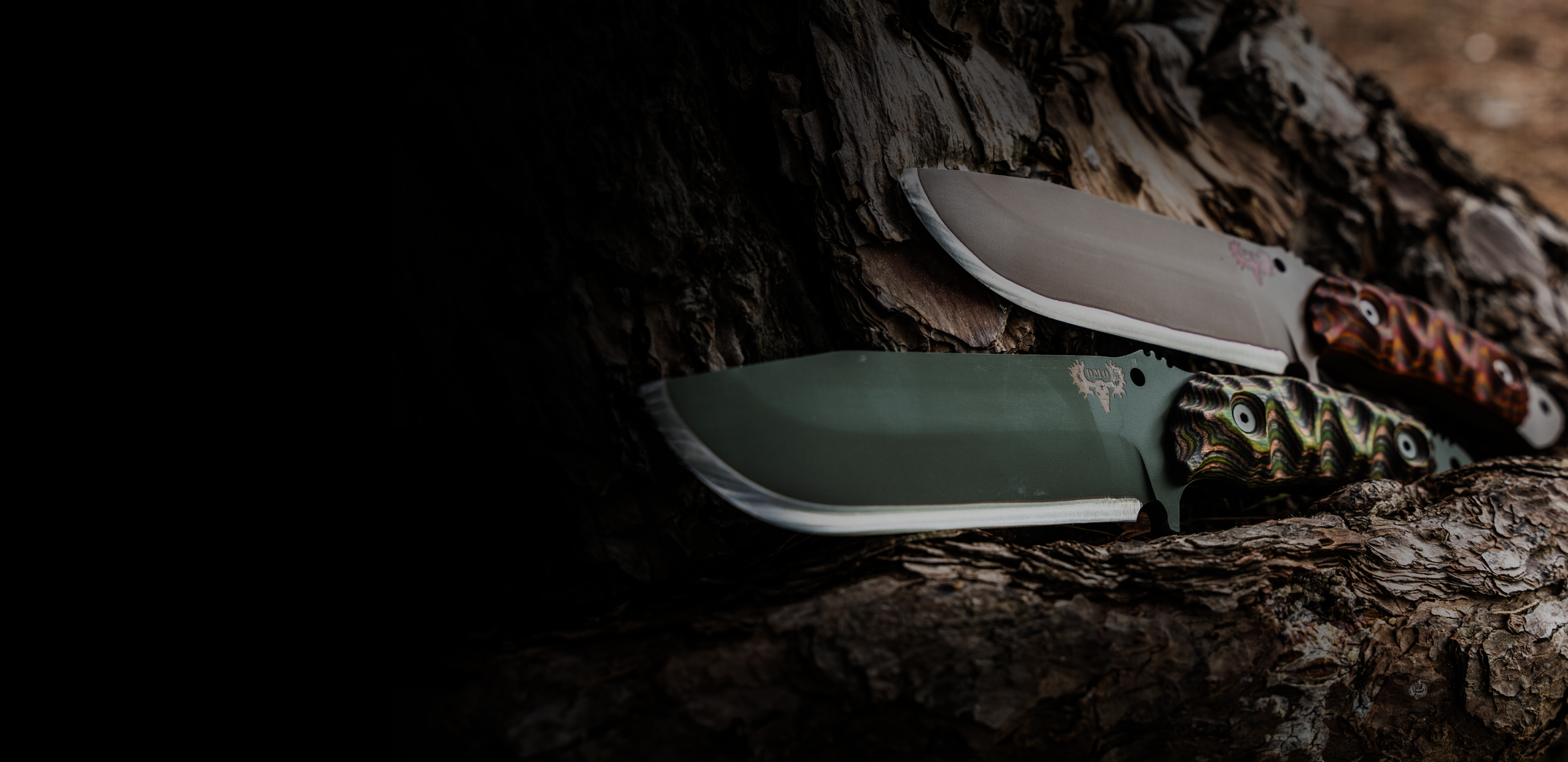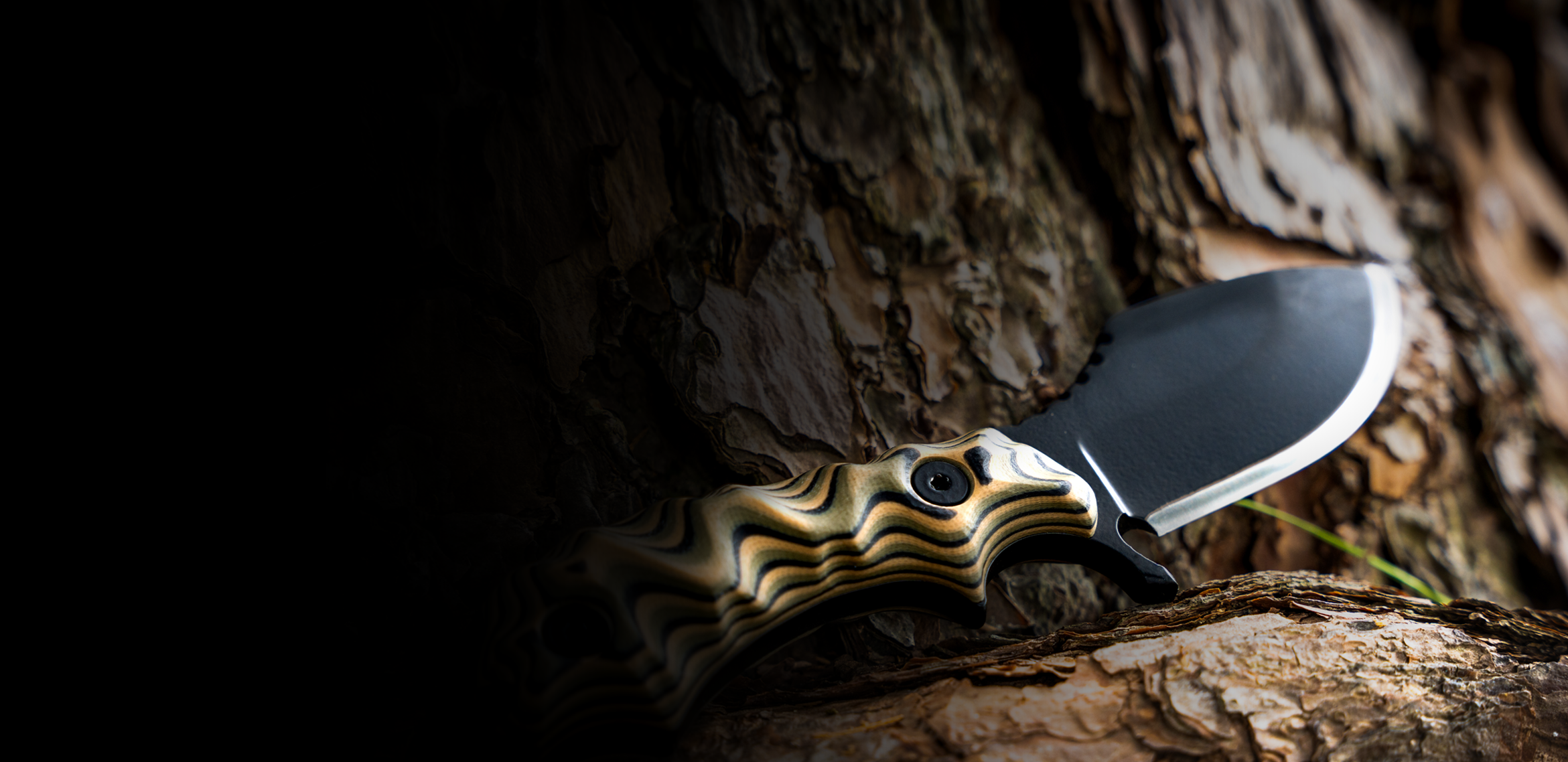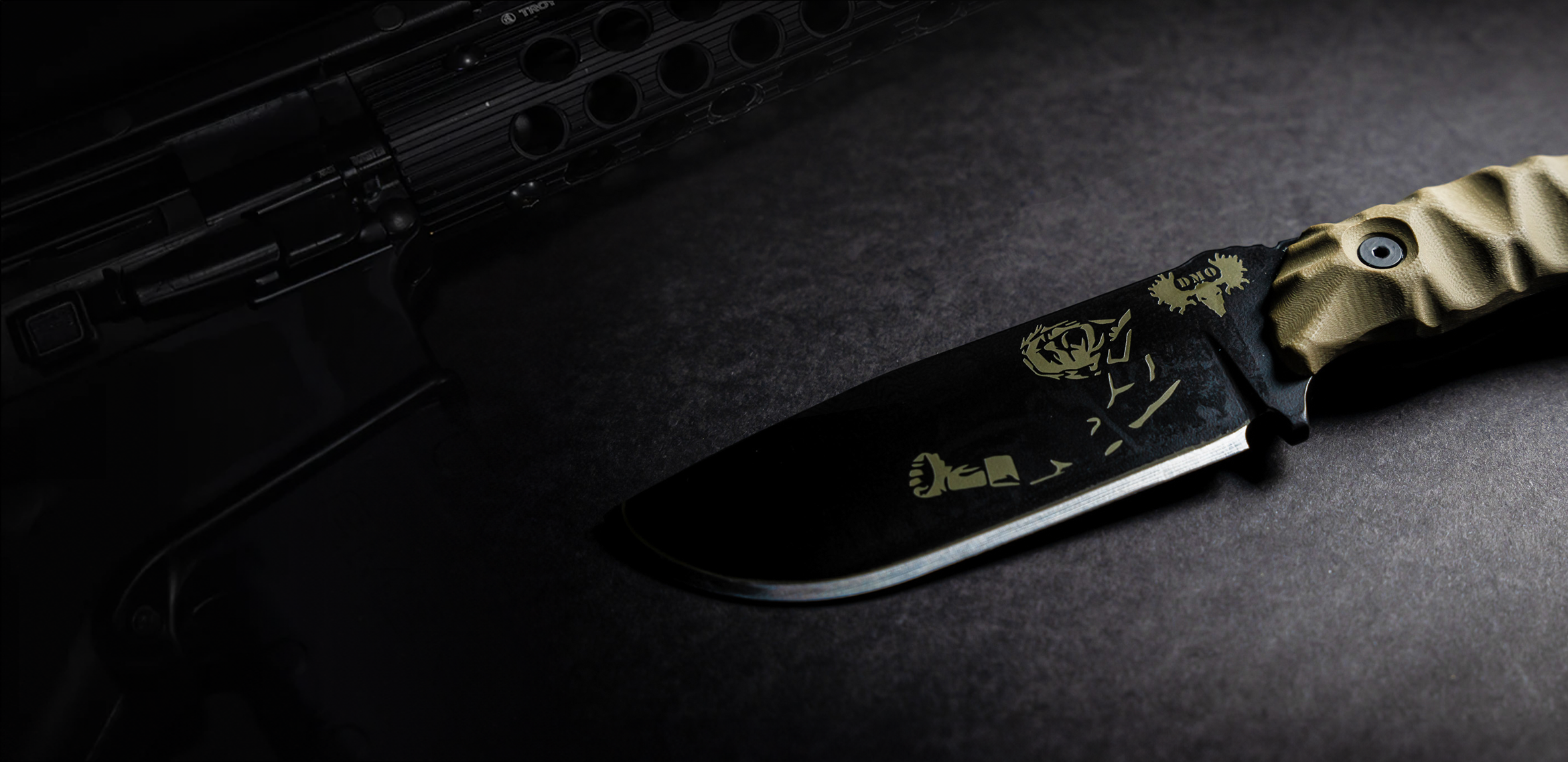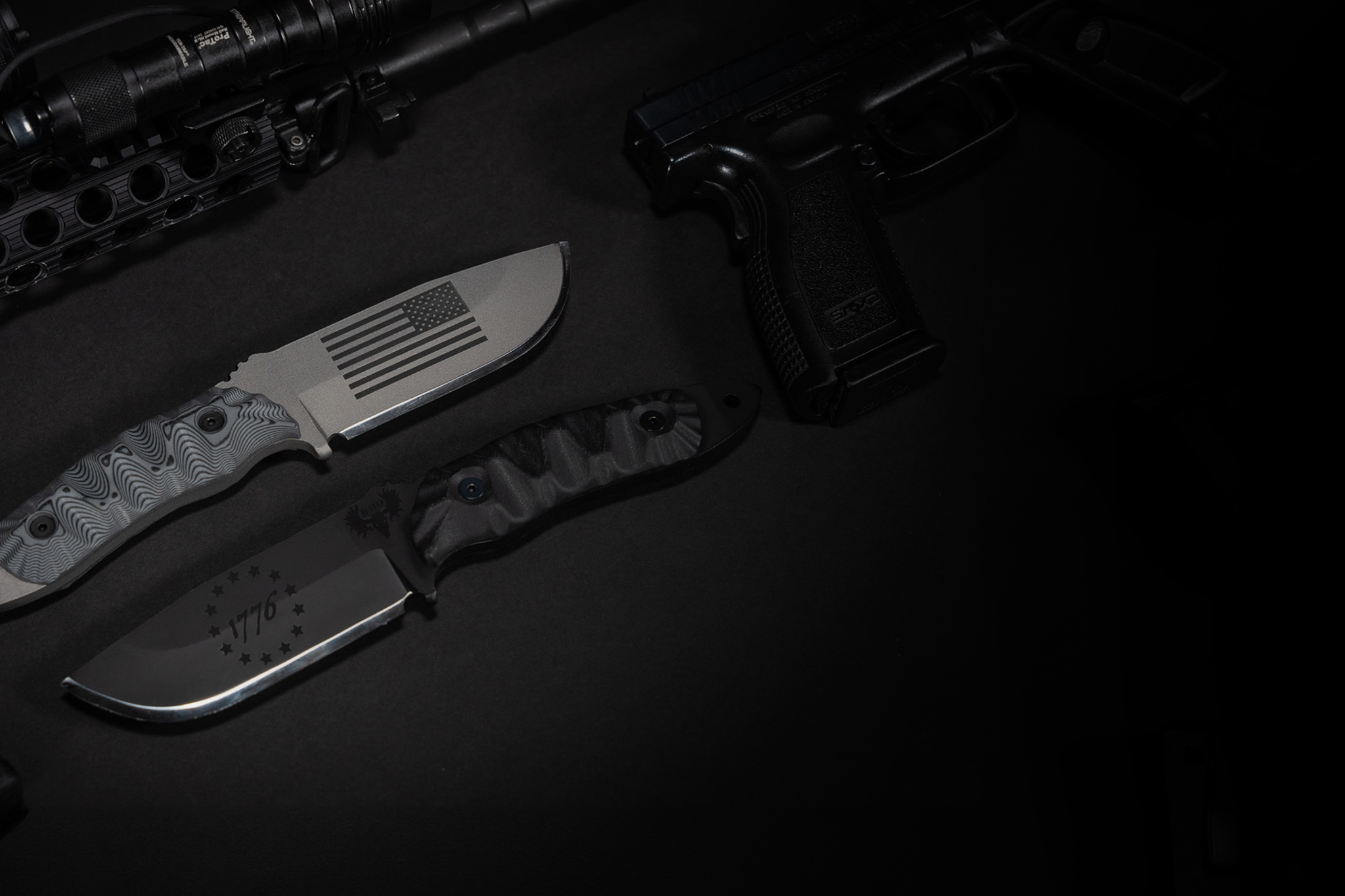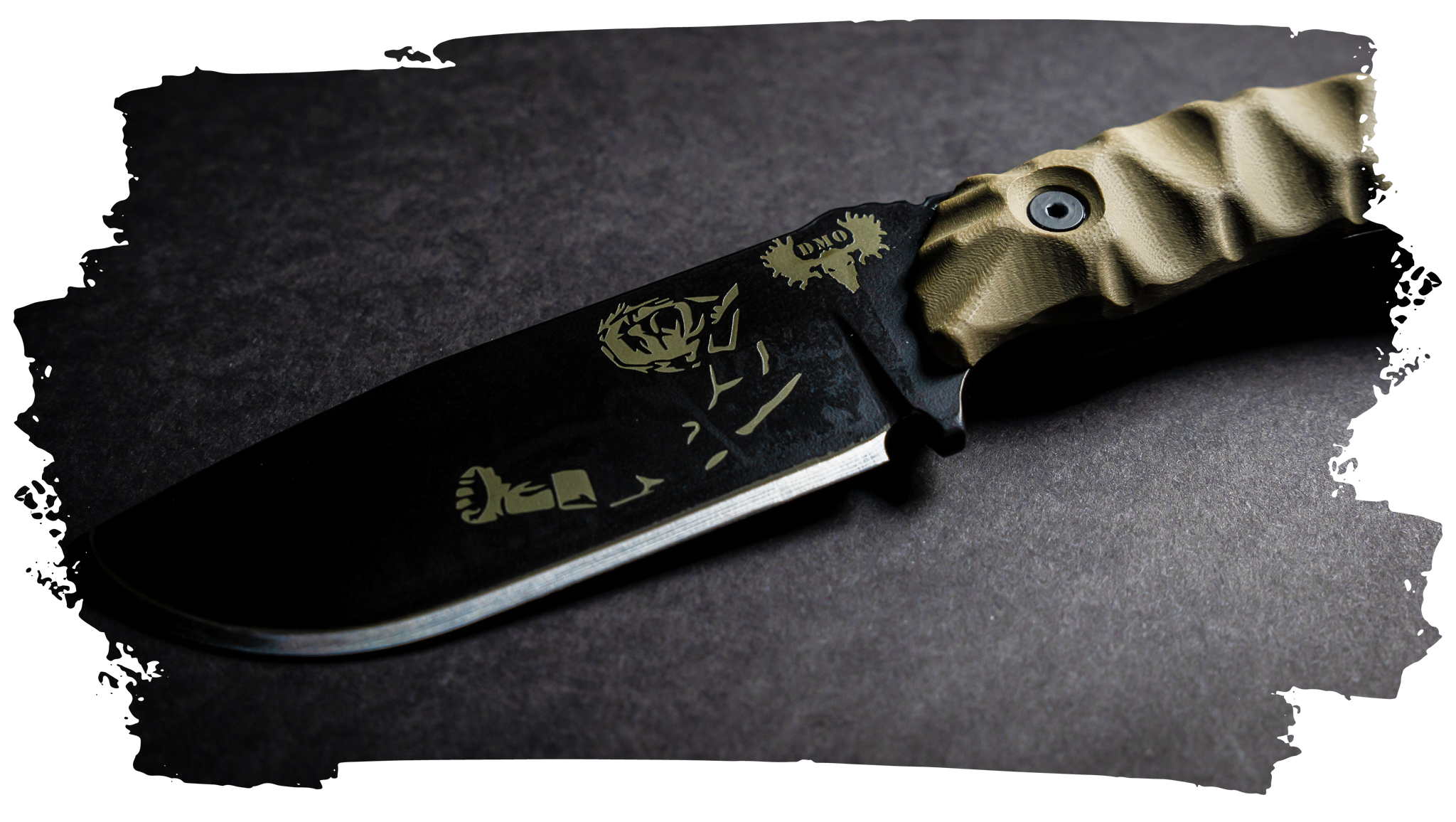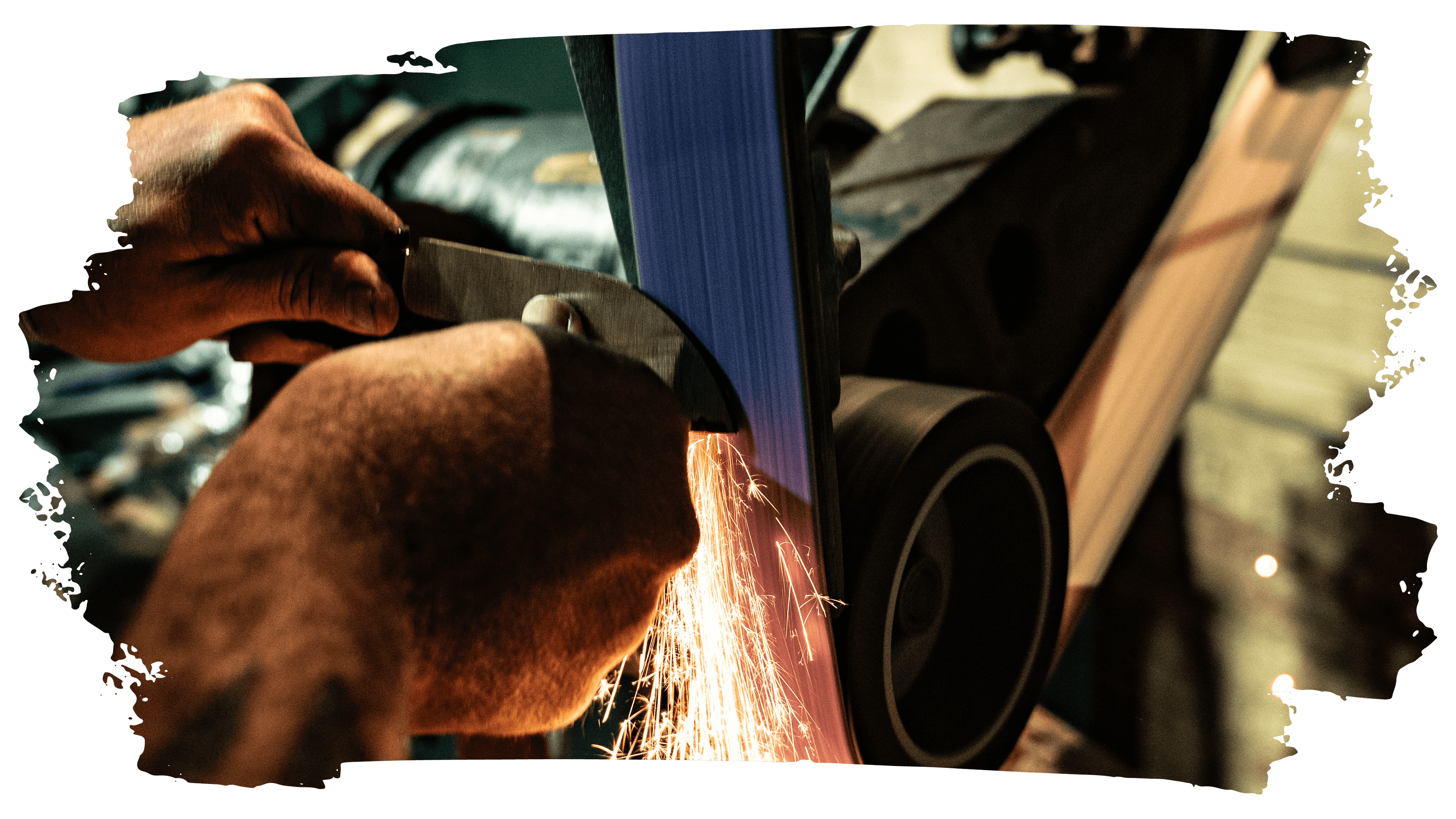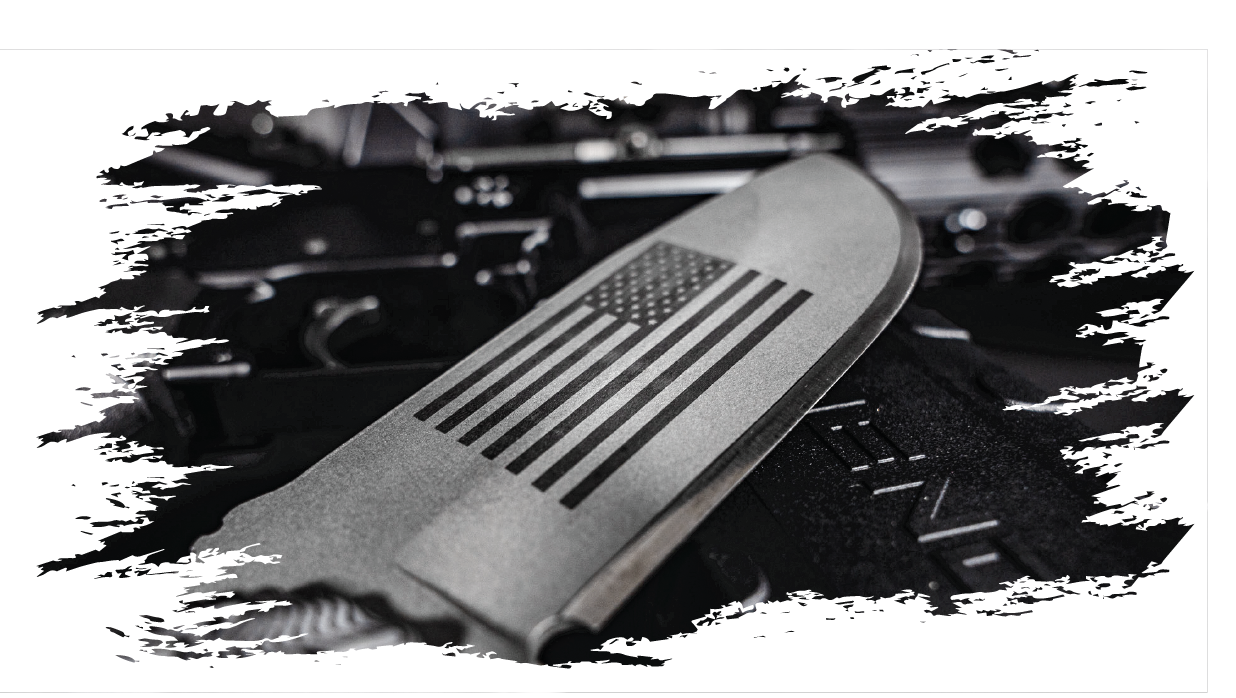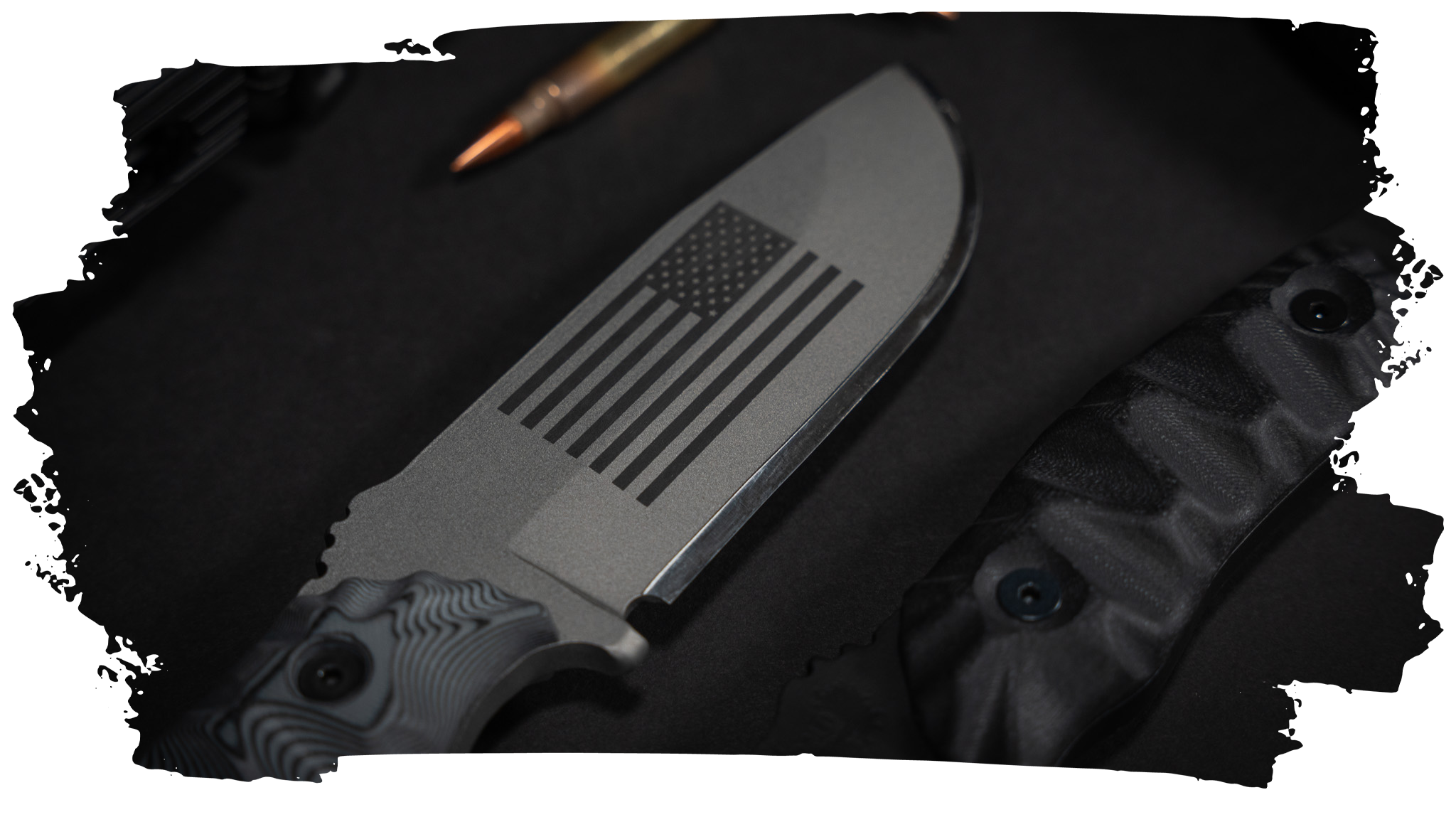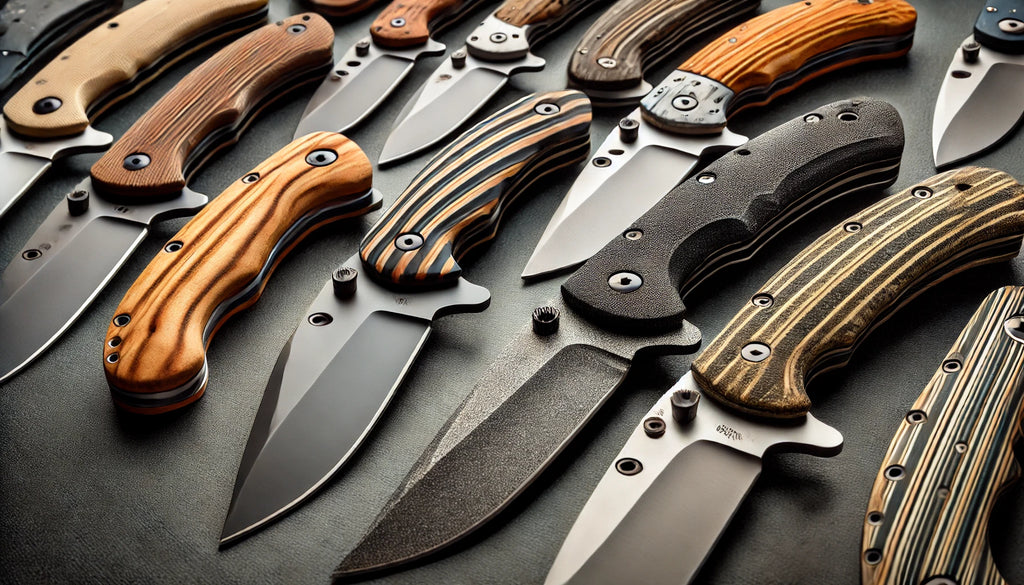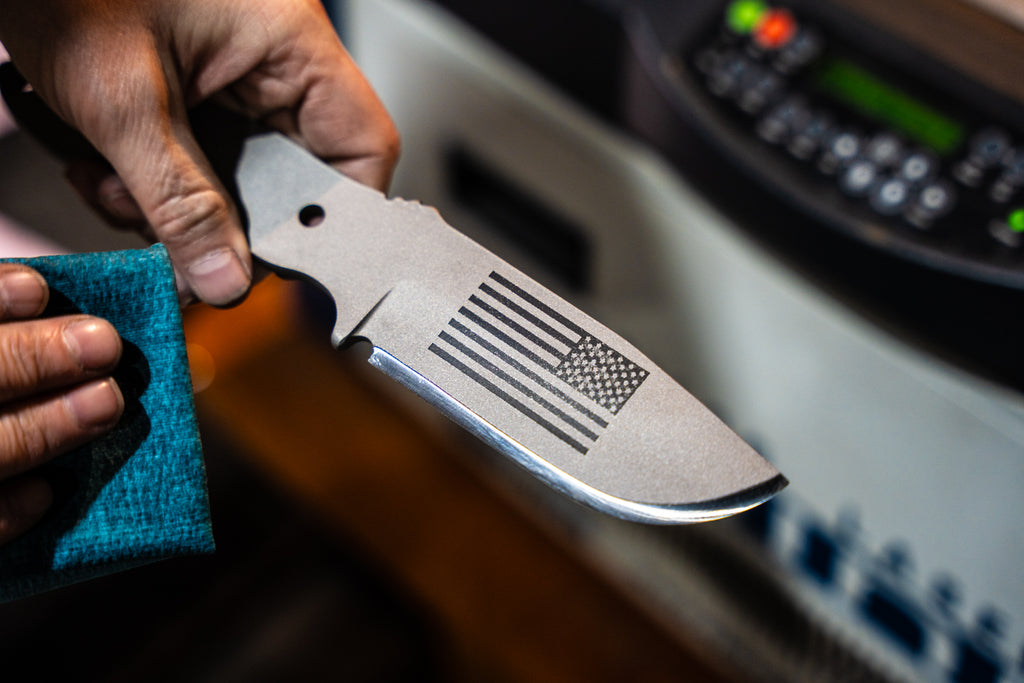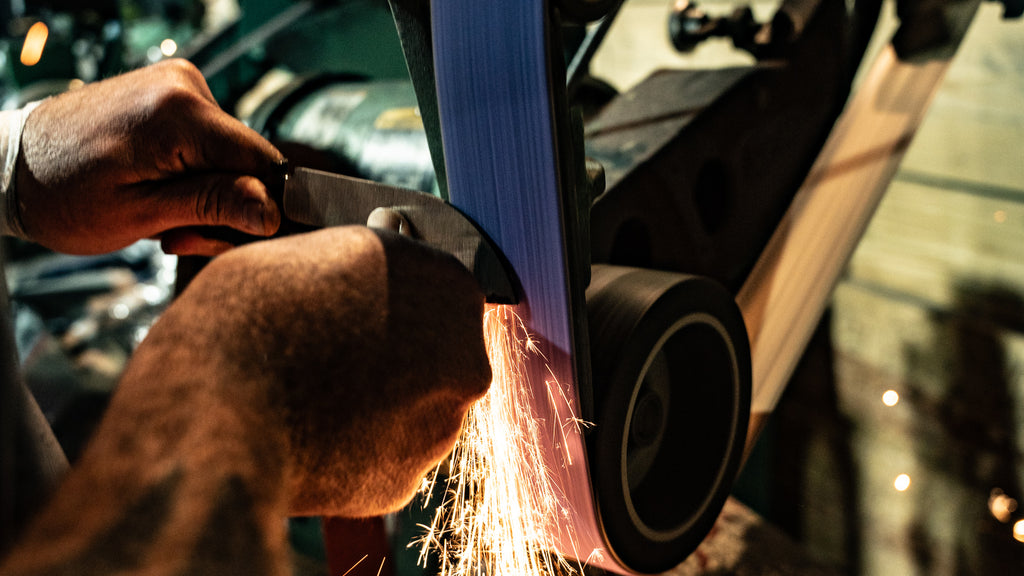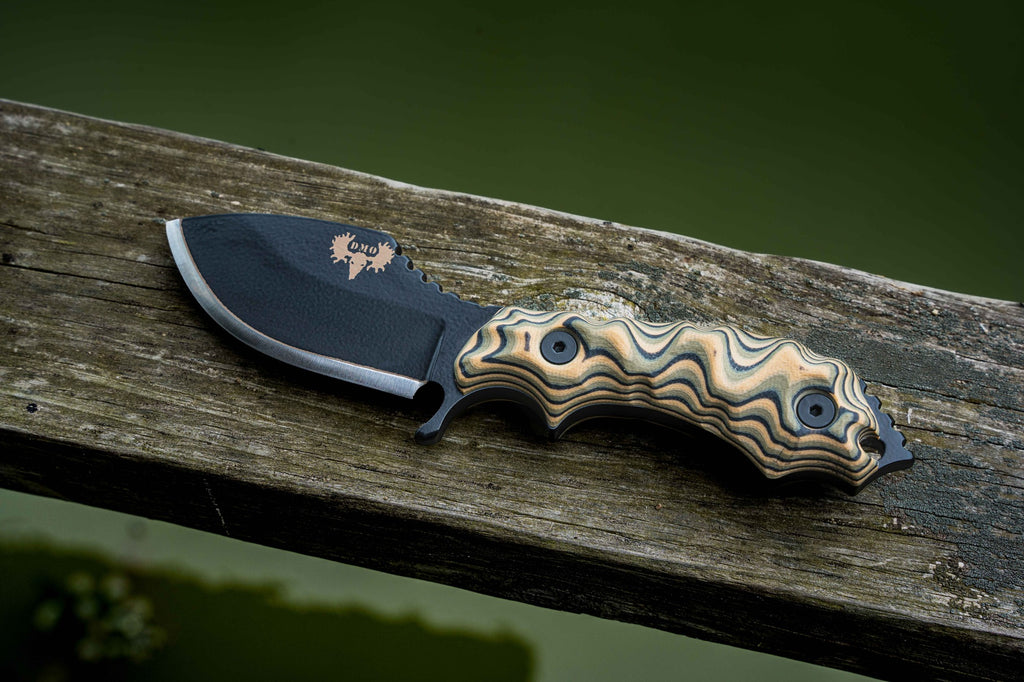
Choosing the right handle material for your knife is just as important as selecting the blade steel. The handle material significantly affects the knife's grip, comfort, and overall usability. Among the various options available, G-10 has emerged as a popular choice for many knife enthusiasts and professionals. Known for its durability, resistance to moisture, and excellent grip, G-10 is often preferred over other materials, such as paracord-wrapped handles, especially for heavy-duty and survival knives.
G-10 is a high-pressure fiberglass laminate, created by compressing layers of fiberglass cloth soaked in resin. This process results in a lightweight, yet extremely durable material that can withstand significant wear and tear. One of the primary advantages of G-10 is its resistance to water, chemicals, and temperature changes, making it an ideal choice for knives used in various environments. Unlike paracord-wrapped handles, G-10 does not absorb moisture, which helps prevent the growth of mold and bacteria, ensuring a more hygienic and long-lasting grip.
In contrast, paracord-wrapped handles, while popular for their tactical appearance and versatility, have some notable drawbacks. Paracord can absorb moisture, leading to potential issues with odor and bacteria build-up. Over time, the cord may also become frayed or loose, compromising the knife's grip and making it less reliable in critical situations. Additionally, paracord-wrapped handles generally provide less structural integrity and comfort compared to G-10, especially during extended use.
G-10's textured surface enhances grip, providing a secure hold even in wet or slippery conditions. This feature is crucial for maintaining control during precision tasks or when using the knife in adverse weather. The material's rigidity also contributes to overall knife stability, making it easier to handle and reducing the likelihood of accidents. In comparison, paracord-wrapped handles, while offering some grip, may not provide the same level of comfort or security, especially under strenuous conditions.
For those looking for a reliable and durable handle material, G-10 offers significant advantages over paracord-wrapped handles. Its durability, moisture resistance, and excellent grip make it a superior choice for knives intended for hard use, such as survival, tactical, or everyday carry. Whether you're an outdoor enthusiast, a professional, or a knife collector, choosing a G-10 handle ensures that your knife will remain comfortable, reliable, and ready for any challenge.
Choosing the right survival knife is critical for anyone who spends time in the great outdoors. Whether you're hiking, camping, or preparing for emergency situations, a reliable knife is an indispensable tool. The ideal survival knife should offer durability, versatility, and a design that can handle the rigors of outdoor use. Among the many options available, "The Breacher" knife stands out as an exceptional choice, combining rugged construction with practical features that make it an excellent companion in the wild.
One of the most important factors to consider when selecting a survival knife is the material of the blade. "The Breacher" features a blade made from 1095 high carbon steel, known for its superior edge retention and toughness. The dual heat treatment process enhances these properties, resulting in a blade that can withstand heavy use without chipping or dulling quickly. This makes "The Breacher" ideal for a variety of tasks, from cutting rope and preparing food to crafting shelter and processing firewood.
Another key feature of a reliable survival knife is its handle and grip. "The Breacher" is equipped with a handle made from G-10, a durable and lightweight material that provides a secure grip even in wet or slippery conditions. This ensures that the knife can be used safely and effectively in all weather conditions. Additionally, the knife comes with a custom Kydex sheath with a Tek-Lok belt clip, allowing for convenient and secure carry, making it readily accessible when needed.
"The Breacher" also excels in its overall design and build quality. It is 100% made in the USA, with a focus on craftsmanship and attention to detail. The knife's blade length of 4.25 inches and total length of 10 inches strike a balance between portability and functionality, making it versatile enough for detailed work while still being robust enough for more demanding tasks. Its protective Cerakote finish adds an extra layer of durability, protecting against rust and corrosion, which is crucial in harsh outdoor environments.
For anyone seeking a reliable and versatile survival knife, "The Breacher" offers a blend of quality materials, thoughtful design, and practical features that make it a top choice. Its combination of durability, ease of use, and American craftsmanship ensures that it will be a trusted tool for outdoor enthusiasts and survivalists alike.
Blog 3: G-10 vs. Other Handle Materials: Which is Best for Your Knife?
Choosing the right handle material for your knife is just as important as selecting the blade steel. The handle material significantly affects the knife's grip, comfort, and overall usability. Among the various options available, G-10 has emerged as a popular choice for many knife enthusiasts and professionals. Known for its durability, resistance to moisture, and excellent grip, G-10 is often preferred over other materials, such as paracord-wrapped handles, especially for heavy-duty and survival knives.
G-10 is a high-pressure fiberglass laminate, created by compressing layers of fiberglass cloth soaked in resin. This process results in a lightweight, yet extremely durable material that can withstand significant wear and tear. One of the primary advantages of G-10 is its resistance to water, chemicals, and temperature changes, making it an ideal choice for knives used in various environments. Unlike paracord-wrapped handles, G-10 does not absorb moisture, which helps prevent the growth of mold and bacteria, ensuring a more hygienic and long-lasting grip.
In contrast, paracord-wrapped handles, while popular for their tactical appearance and versatility, have some notable drawbacks. Paracord can absorb moisture, leading to potential issues with odor and bacteria build-up. Over time, the cord may also become frayed or loose, compromising the knife's grip and making it less reliable in critical situations. Additionally, paracord-wrapped handles generally provide less structural integrity and comfort compared to G-10, especially during extended use.
G-10's textured surface enhances grip, providing a secure hold even in wet or slippery conditions. This feature is crucial for maintaining control during precision tasks or when using the knife in adverse weather. The material's rigidity also contributes to overall knife stability, making it easier to handle and reducing the likelihood of accidents. In comparison, paracord-wrapped handles, while offering some grip, may not provide the same level of comfort or security, especially under strenuous conditions.
For those looking for a reliable and durable handle material, G-10 offers significant advantages over paracord-wrapped handles. Its durability, moisture resistance, and excellent grip make it a superior choice for knives intended for hard use, such as survival, tactical, or everyday carry. Whether you're an outdoor enthusiast, a professional, or a knife collector, choosing a G-10 handle ensures that your knife will remain comfortable, reliable, and ready for any challenge.
When it comes to selecting the ideal knife, one of the most crucial aspects to consider is the blade material. The choice of steel not only influences the knife's durability and sharpness but also its overall performance in various tasks. Among the myriad of options available, 1095 high carbon steel stands out, particularly in its dual heat-treated form, known as 1095A. This steel is renowned for its excellent edge retention, toughness, and versatility, making it a preferred choice for many knife enthusiasts and professionals.
1095 high carbon steel, in its basic form, contains approximately 0.95% carbon, providing a good balance between hardness and toughness. This composition allows the blade to hold a sharp edge for extended periods, which is essential for tasks requiring precision and consistency. However, 1095 steel is prone to corrosion due to its high carbon content. To mitigate this, knives like "The Breacher" often feature protective coatings such as Cerakote, which enhance corrosion resistance while maintaining the steel's inherent qualities.
The dual heat treatment process, often referred to as 1095A, further enhances the steel's properties. This process involves heating the steel to a high temperature and then cooling it rapidly, followed by a secondary tempering phase. The result is a blade with superior hardness and edge retention, coupled with improved toughness. This makes 1095A an excellent choice for heavy-duty applications, such as outdoor survival and tactical use, where the knife must withstand significant stress without chipping or breaking.
Choosing 1095A high carbon steel for your knife ensures a robust and reliable tool that can handle a wide range of tasks. Whether you're an outdoor enthusiast, a collector, or a professional, this steel offers a perfect blend of performance and durability. While regular maintenance, such as proper cleaning and oiling, is necessary to prevent rust, the benefits of 1095A steel far outweigh the minor upkeep, making it a top contender in the world of knife steels.
Knives are essential tools in various contexts, from culinary arts to outdoor activities and everyday tasks. However, they are often surrounded by myths and misconceptions that can lead to unsafe practices or misunderstandings about their use and care. Here, we debunk some of the most common myths about knives and knife safety, providing clarity and promoting responsible knife handling.
Myth 1: Dull Knives Are Safer Than Sharp Ones
One of the most pervasive myths is that dull knives are safer to use than sharp ones. In reality, a dull knife requires more force to cut, increasing the likelihood of slipping and causing an injury. A sharp knife, on the other hand, allows for more precise cuts with less effort, reducing the risk of accidents. Regular sharpening and proper maintenance are crucial for ensuring that your knife remains an effective and safe tool.
Myth 2: All Knives Are Created Equal
Another common misconception is that all knives are essentially the same, regardless of their design, material, or intended use. In truth, knives are specialized tools, and using the wrong type of knife for a task can be dangerous. For example, using a fillet knife to chop bones can damage the blade and potentially cause injury. It's important to understand the purpose of each knife type and select the appropriate tool for the job at hand.
Myth 3: Knife Safety Is Only About Proper Handling
While proper handling is a critical aspect of knife safety, it's not the only factor to consider. Storage and maintenance also play vital roles. Knives should be stored in a secure, dry place, such as a knife block or magnetic strip, to prevent accidents and blade damage. Regular cleaning and sharpening are necessary to maintain a knife's performance and longevity. Additionally, always handle knives with care, keeping your fingers away from the blade and ensuring a firm grip.
Myth 4: Cutting Boards Are All the Same
The choice of cutting board can significantly impact knife safety and longevity. Hard surfaces like glass or stone can dull blades quickly, while soft materials like wood or plastic are gentler on the knife's edge. Furthermore, using a cutting board with a stable, non-slip surface prevents accidents caused by slipping or uneven cutting. Investing in a quality cutting board is as important as choosing a good knife.
By debunking these common misconceptions, we can promote safer and more effective knife use. Understanding the importance of proper maintenance, appropriate tool selection, and responsible handling are key to enjoying the benefits of knives while minimizing the risks.
For those seeking a reliable and versatile knife, "The Breacher" stands out as an excellent choice. Crafted from 1095 high carbon steel, it offers exceptional edge retention and durability, enhanced by a dual heat treatment process. The G-10 handle provides a secure grip in all conditions, while the Cerakote finish protects against corrosion. Whether you're tackling outdoor tasks or everyday challenges, "The Breacher" combines practicality with American craftsmanship, ensuring you have a dependable tool at your side.
When it comes to selecting the ideal knife, one of the most crucial aspects to consider is the blade material. The choice of steel not only influences the knife's durability and sharpness but also its overall performance in various tasks. Among the myriad of options available, 1095 high carbon steel stands out, particularly in its dual heat-treated form, known as 1095A. This steel is renowned for its excellent edge retention, toughness, and versatility, making it a preferred choice for many knife enthusiasts and professionals.
1095 high carbon steel, in its basic form, contains approximately 0.95% carbon, providing a good balance between hardness and toughness. This composition allows the blade to hold a sharp edge for extended periods, which is essential for tasks requiring precision and consistency. However, 1095 steel is prone to corrosion due to its high carbon content. To mitigate this, knives like "The Breacher" often feature protective coatings such as Cerakote, which enhance corrosion resistance while maintaining the steel's inherent qualities.
The dual heat treatment process, often referred to as 1095A, further enhances the steel's properties. This process involves heating the steel to a high temperature and then cooling it rapidly, followed by a secondary tempering phase. The result is a blade with superior hardness and edge retention, coupled with improved toughness. This makes 1095A an excellent choice for heavy-duty applications, such as outdoor survival and tactical use, where the knife must withstand significant stress without chipping or breaking.
Choosing 1095A high carbon steel for your knife ensures a robust and reliable tool that can handle a wide range of tasks. Whether you're an outdoor enthusiast, a collector, or a professional, this steel offers a perfect blend of performance and durability. While regular maintenance, such as proper cleaning and oiling, is necessary to prevent rust, the benefits of 1095A steel far outweigh the minor upkeep, making it a top contender in the world of knife steels.
Choosing the right handle material for your knife is just as important as selecting the blade steel. The handle material significantly affects the knife's grip, comfort, and overall usability. Among the various options available, G-10 has emerged as a popular choice for many knife enthusiasts and professionals. Known for its durability, resistance to moisture, and excellent grip, G-10 is often preferred over other materials, such as paracord-wrapped handles, especially for heavy-duty and survival knives.
G-10 is a high-pressure fiberglass laminate, created by compressing layers of fiberglass cloth soaked in resin. This process results in a lightweight, yet extremely durable material that can withstand significant wear and tear. One of the primary advantages of G-10 is its resistance to water, chemicals, and temperature changes, making it an ideal choice for knives used in various environments. Unlike paracord-wrapped handles, G-10 does not absorb moisture, which helps prevent the growth of mold and bacteria, ensuring a more hygienic and long-lasting grip.
In contrast, paracord-wrapped handles, while popular for their tactical appearance and versatility, have some notable drawbacks. Paracord can absorb moisture, leading to potential issues with odor and bacteria build-up. Over time, the cord may also become frayed or loose, compromising the knife's grip and making it less reliable in critical situations. Additionally, paracord-wrapped handles generally provide less structural integrity and comfort compared to G-10, especially during extended use.
G-10's textured surface enhances grip, providing a secure hold even in wet or slippery conditions. This feature is crucial for maintaining control during precision tasks or when using the knife in adverse weather. The material's rigidity also contributes to overall knife stability, making it easier to handle and reducing the likelihood of accidents. In comparison, paracord-wrapped handles, while offering some grip, may not provide the same level of comfort or security, especially under strenuous conditions.
For those looking for a reliable and durable handle material, G-10 offers significant advantages over paracord-wrapped handles. Its durability, moisture resistance, and excellent grip make it a superior choice for knives intended for hard use, such as survival, tactical, or everyday carry. Whether you're an outdoor enthusiast, a professional, or a knife collector, choosing a G-10 handle ensures that your knife will remain comfortable, reliable, and ready for any challenge.
Choosing the right survival knife is critical for anyone who spends time in the great outdoors. Whether you're hiking, camping, or preparing for emergency situations, a reliable knife is an indispensable tool. The ideal survival knife should offer durability, versatility, and a design that can handle the rigors of outdoor use. Among the many options available, "The Breacher" knife stands out as an exceptional choice, combining rugged construction with practical features that make it an excellent companion in the wild.
One of the most important factors to consider when selecting a survival knife is the material of the blade. "The Breacher" features a blade made from 1095 high carbon steel, known for its superior edge retention and toughness. The dual heat treatment process enhances these properties, resulting in a blade that can withstand heavy use without chipping or dulling quickly. This makes "The Breacher" ideal for a variety of tasks, from cutting rope and preparing food to crafting shelter and processing firewood.
Another key feature of a reliable survival knife is its handle and grip. "The Breacher" is equipped with a handle made from G-10, a durable and lightweight material that provides a secure grip even in wet or slippery conditions. This ensures that the knife can be used safely and effectively in all weather conditions. Additionally, the knife comes with a custom Kydex sheath with a Tek-Lok belt clip, allowing for convenient and secure carry, making it readily accessible when needed.
"The Breacher" also excels in its overall design and build quality. It is 100% made in the USA, with a focus on craftsmanship and attention to detail. The knife's blade length of 4.25 inches and total length of 10 inches strike a balance between portability and functionality, making it versatile enough for detailed work while still being robust enough for more demanding tasks. Its protective Cerakote finish adds an extra layer of durability, protecting against rust and corrosion, which is crucial in harsh outdoor environments.
For anyone seeking a reliable and versatile survival knife, "The Breacher" offers a blend of quality materials, thoughtful design, and practical features that make it a top choice. Its combination of durability, ease of use, and American craftsmanship ensures that it will be a trusted tool for outdoor enthusiasts and survivalists alike.
Blog 3: G-10 vs. Other Handle Materials: Which is Best for Your Knife?
Choosing the right handle material for your knife is just as important as selecting the blade steel. The handle material significantly affects the knife's grip, comfort, and overall usability. Among the various options available, G-10 has emerged as a popular choice for many knife enthusiasts and professionals. Known for its durability, resistance to moisture, and excellent grip, G-10 is often preferred over other materials, such as paracord-wrapped handles, especially for heavy-duty and survival knives.
G-10 is a high-pressure fiberglass laminate, created by compressing layers of fiberglass cloth soaked in resin. This process results in a lightweight, yet extremely durable material that can withstand significant wear and tear. One of the primary advantages of G-10 is its resistance to water, chemicals, and temperature changes, making it an ideal choice for knives used in various environments. Unlike paracord-wrapped handles, G-10 does not absorb moisture, which helps prevent the growth of mold and bacteria, ensuring a more hygienic and long-lasting grip.
In contrast, paracord-wrapped handles, while popular for their tactical appearance and versatility, have some notable drawbacks. Paracord can absorb moisture, leading to potential issues with odor and bacteria build-up. Over time, the cord may also become frayed or loose, compromising the knife's grip and making it less reliable in critical situations. Additionally, paracord-wrapped handles generally provide less structural integrity and comfort compared to G-10, especially during extended use.
G-10's textured surface enhances grip, providing a secure hold even in wet or slippery conditions. This feature is crucial for maintaining control during precision tasks or when using the knife in adverse weather. The material's rigidity also contributes to overall knife stability, making it easier to handle and reducing the likelihood of accidents. In comparison, paracord-wrapped handles, while offering some grip, may not provide the same level of comfort or security, especially under strenuous conditions.
For those looking for a reliable and durable handle material, G-10 offers significant advantages over paracord-wrapped handles. Its durability, moisture resistance, and excellent grip make it a superior choice for knives intended for hard use, such as survival, tactical, or everyday carry. Whether you're an outdoor enthusiast, a professional, or a knife collector, choosing a G-10 handle ensures that your knife will remain comfortable, reliable, and ready for any challenge.

